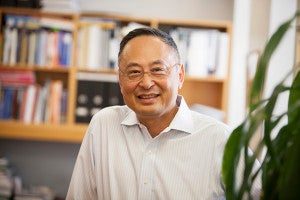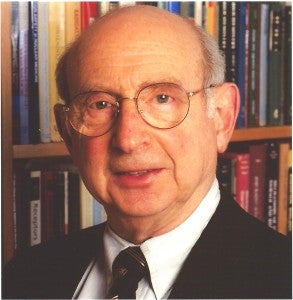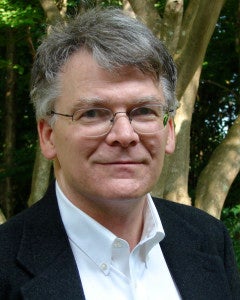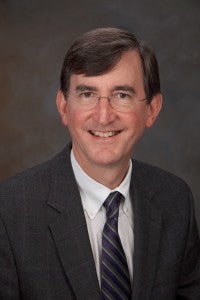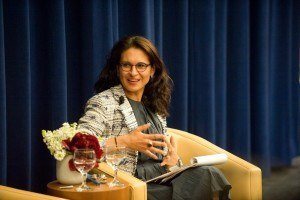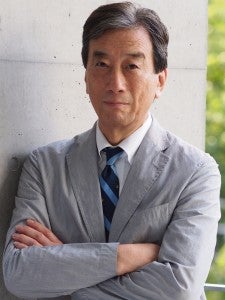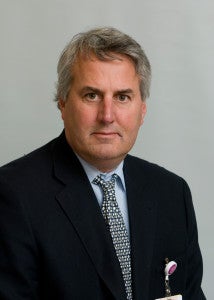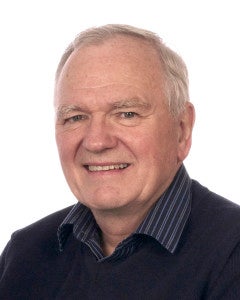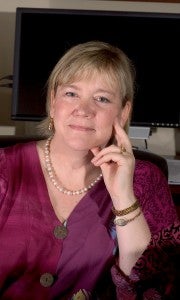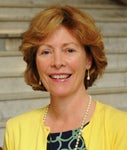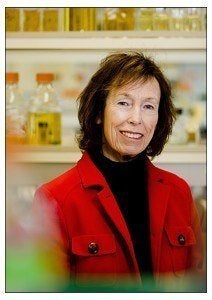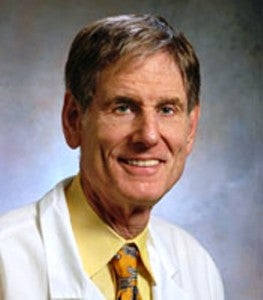Dr. Gerald Chan
Gerald Chan is the co-founder of Morningside, a private investment group with venture capital, private equity and property investments.
In the life science sector, Morningside focuses on start-up biotechnology companies founded on novel scientific discoveries. Notable recent examples include the oncolytic virus company Biovex and the cancer vaccine company Aduro.
Gerald is a member of the Global Advisory Council of the International Society for Stem Cell Research, the Global Advisory Council of Harvard University, the Dean’s Board of Advisors of the Harvard TH Chan School of Public Health, and the advisory boards of the Johns Hopkins Nanjing Center and the Columbia University Center for Radiological Research.
He received his Master’s degree in medical radiological physics and Doctor of Science degree in radiation biology from Harvard University. He then did his post-doctoral training in pathology at the Dana-Farber Cancer Institute.
Dr. James Adelstein
James Adelstein has an MD from Harvard Medical School and a PhD in biophysics from MIT. He was a medical resident at the Peter Bent Brigham Hospital (now the Brigham and Women’s Hospital) and did post-doctoral work in radiation biology at Cambridge University and in nuclear medicine at the Johns Hopkins. He was a Fogarty visiting fellow in clinical physiology at the University of Pisa. From 1960-68, he was a member of the Harvard Medical School Department of Anatomy where he established a laboratory in radiation biology. From 1968-1978, he organized programs in nuclear medicine at Peter Bent Brigham Hospital, Children’s Hospital and the Dana Farber Cancer Institute. He remained Director of the Joint Program in Nuclear Medicine through 2003. From 1978-1998 he was Dean for Academic Programs at Harvard Medical School responsible for curriculum development and organization of the Faculty. He has been a Professor of Radiology, a University Professor and, now, the Paul C. Cabot Distinguished Professor of Medical Biophysics, all at Harvard. He has served as Director of the Harvard-MIT MD-PhD program and as Chair of the Division of Medical Sciences in Harvard’s Graduate School of Arts and Sciences. His research interests include the radiation biophysics of radioactive decay and the development of radio-labeled diagnostic and therapeutic agents. He is a fellow of the American Association for the Advancement of Science, a member of the Institute of Medicine, and recipient of the Aebersold, Blumgart, and de Hevesy awards from the Society of Nuclear Medicine.
Dr. Douglas E. Brash
Douglas E. Brash is Professor of Therapeutic Radiology and Dermatology at Yale School of Medicine. After receiving degrees in Engineering Physics and Biophysics, he joined the Haseltine laboratory at Harvard to apply DNA sequencing techniques to DNA repair and mutagenesis. At the National Cancer Institute and then Yale, his laboratory identified DNA photoproducts responsible for UV mutations, used UV signatures to identify genes mutated by sunlight in the course of generating skin cancers, showed that one of these genes, p53 , is needed for UV-induced apoptosis to remove cells that otherwise would lead to cancer, and that this apoptosis also drives clonal expansion of mutant cells once they arise. Most recently, his group showed that the DNA photoproducts causing skin cancer continue to be induced after sun exposure ends, through chemiexcitation of melanin. Current interests include the pathogenic effects of chemiexcitation in other diseases and the role of UV in tumor evolution.
Dr. James Brink
James A. Brink is Radiologist-in-Chief at the Massachusetts General Hospital (MGH) and the Juan M. Taveras Professor of Radiology at Harvard Medical School. He earned a BS degree in Electrical Engineering at Purdue University and an MD at Indiana University before completing his residency and fellowship at MGH in 1990. He joined the faculty at the Mallinckrodt Institute of Radiology at Washington University School of Medicine where he rose to the rank of Associate Professor prior to joining the faculty at Yale University in 1997. Dr. Brink served as Chair of the Yale Department of Diagnostic Radiology from 2006 to 2013 prior to returning to MGH as Radiologist-in-Chief. Dr. Brink is a fellow of the Society for Computed Body Tomography/Magnetic Resonance, a fellow of the American College of Radiology (ACR), and Past-President of the American Roentgen Ray Society (2012). For the ACR, Dr. Brink serves as Vice-Chair, Board of Chancellors, and for the National Council for Radiation Protection and Measurements (NCRP), he serves as the Scientific Vice-President for Radiation Protection in Medicine. While he has broad experience in medical imaging, including utilization and management of imaging resources, Dr. Brink has particular interest and expertise in issues related to the monitoring and control of medical radiation exposure.
Dr. Francesca Dominici
Dr. Francesca Dominici is Professor of Biostatistics and Senior Associate Dean for Research at the Harvard T.H. Chan School of Public Health. She received her PhD in Statistics from the University of Padua, Italy, in 1997. From 1999 to 2009 she was a Professor at the Bloomberg School of Public Health at Johns Hopkins University. In 2009 she moved to Harvard T.H. Chan School of Public Health as a tenured Professor of Biostatistics and was appointed Associate Dean of Information Technology in 2011. In Fall 2013, she was appointed Senior Associate Dean for Research.
Dr. Dominici’s research has focused on the development of statistical methods for the analysis of large and complex data. She is a passionate data scientist; her expertise is in the development of statistical methods for the analysis of large, messy data and for combining information across heterogeneous data sources. She leads several interdisciplinary groups of scientists with the ultimate goal of addressing important questions in environmental health science, climate change, comparative effectiveness research in cancer, and health policy.
In recent years, Dr. Dominici and her team have been acquiring and analyzing billions of claims data from the Center for Medicare Services. These claims data provide information on cause-specific hospitalization for nearly the entire population aged 65 and over enrolled in the Medicare system over the last 20 years. She links daily claims data to daily air pollution levels from thousands of monitoring stations by geographical location. Rigorous statistical analyses of terabytes of data have provided robust evidence on the adverse health effects of air pollution and climate change. Her studies have directly and routinely impacted air quality policy and led to more stringent ambient air quality standards in the US. Her team is now using satellite data and multiple data sources to estimate exposure to air pollution in rural areas in the US, in India and in other developing countries. She collaborates with faculty across the University on many data science projects; for example, her collaborative work with Gary King, Harvard University’s Albert J. Weatherhead III University Professor, focuses on statistical methods development and reproducible research for the evaluation of air quality regulations. She is also collaborating with Loretta Mickley from the Harvard School of Engineering and Applied Sciences to estimate the health impacts of climate change. She is collaborating with Drs. Chirag Patel and Isacc Kokane from the Department of Biomedical Informatics at the Harvard Medical School to develop new methods to capture the complexity of the exposome (defined as the impact of the totality of environmental exposures) in longitudinal children’s health outcomes. Finally, Dr. Dominici is collaborating with Dr. Deborah Schrag and her team from the Dana-Farber Cancer Institute to examine and compare optimal ways to deliver health care in end of life cancer, with a special focus on glioblastoma and pancreatic cancer.
In her role as Senior Associate Dean for Research, Dr. Dominici has led advancements to optimize the health of the Harvard Chan School’s research enterprise by:
- Increasing the competitiveness of the School’s faculty to grow and diversify research funding;
- Building the technological capacities of the Harvard Chan School by strengthening research computing infrastructure and assisting faculty in transitioning to the Big Data environment;
- Cultivating funding and collaboration opportunities that directly support and respond to the School’s strategic vision, academic mission, and internal financial & administrative needs.
As Senior Associate Dean for Research, Dr. Dominici also oversees the School’s Office of Research Strategy and Development (ORSD) and leads ORSD’s flagship faculty grant-writing short course. Through the short course, Dr. Dominici works intensively with individual junior faculty members to develop, target, and polish highly competitive research proposals. The short course has proven to be one of the most critical supports Chan School faculty can access to grow and diversify their sponsored research portfolios. Since its creation, Dr. Dominici’s office has mentored over 62 School of Public Health faculty through the grant-writing short course. In total, her office has supported the development of over 135 research, career development and infrastructure proposals, totaling $420M in requested funds and resulting in $214M in awards to date. In addition to her own extensive research program, as Senior Associate Dean for Research, Dr. Dominici has personally contributed scientific leadership in the submission of myriad pioneering proposals designed to advance the School’s and University’s scientific innovation and the field of public health at large through data science.
In her role as Associate Dean of Information Technology, Dr. Dominici has led new initiatives, specifically one that transformed the research computing landscape at the Harvard Chan School. Dr. Dominici worked closely with the senior leadership at the School of Public Health and the Faculty of Arts and Sciences to execute a Memorandum of Understanding (MOU) in February 2012 between the Harvard Chan School and the research computing (RC) department at the Faculty of Arts and Science (FASRC) within Harvard University. The MOU, which was the first of its kind, has since allowed Chan School faculty, researchers, staff, and students to access the FAS Research Computing environment (Odyssey) and basic storage, along with software licenses. Harvard Chan School users of the compute environment are treated equally to FAS users in terms of receiving priority access to resources, software licenses, and storage facilities, as well as ticket turnaround time, and training opportunities hosted by FASRC. The partnership between the Chan School and Research Computing at FAS has brought scientists together across Harvard University, and has established the cutting edge research platform necessary to continue to position the Harvard Chan School and the University at large to define the frontiers of public health and biomedical science.
In addition to her research interests and administrative leadership roles, Dr. Dominici has demonstrated a career-long commitment to promoting diversity in academia. Together with Dr. Linda P. Fried, current Dean of the Mailman School of Public Health at Columbia University, Dr. Dominici co-chaired the University Committee on the Status of Women at Johns Hopkins University. Based on that experience she wrote a paper entitled “So Few Women Leaders” published in Academe, July-August 2009. In 2015 she was awarded the Florence Nightingale David award based on her contributions as a role model to women and her demonstrated excellence in: statistical research, leadership of multidisciplinary collaborative groups, statistics education and service to the profession of statistics. In 2009, she was awarded the Diversity Recognition Award by the President of Johns Hopkins University. Recently, she has given lectures and moderated panel discussions on work-family balance across Harvard (see http://news.harvard.edu/gazette/story/2012/11/having-it-all-at-harvard/). Currently she is the chair of the University Committee for the Advancement of Women Faculty at the Harvard T.H. Chan School of Public Health.
Dr. Kiyoshi Kurokawa
Adjunct Professor, National Graduate Institute for Policy Studies
Chairman, Health and Global Policy Institute
Chair of the Board, Global Health Innovative Technology Fund (GHIT)
Professor Emeritus of the University of Tokyo
A graduate of the University of Tokyo, professor of medicine at UCLA (1979-84), Univ Tokyo (89-96), Dean Tokai Univ Med School (96-02), President of the Science Council of Japan (03-06) as well as Science Advisor to the Government of Japan (06-08); He served as an executive member of many national and international professional societies of his disciplines, Commissioner of WHO (2005-09), Institute of Medicine of National Academies of Sciences of USA, serve(d) as Board members of Alexandria Library (Egypt), A*STAR (Singapore), Khalifa University (Abu Dhabi), OIST (Okinawa), Advisory Board to the Prime Minister of Malaysia. He was appointed to be a member of the World Dementia Council by the UK Government in April, 2014. He was Chair of Fukushima Nuclear Accident Independent Investigation Commission by the National Diet of Japan (NAIIC; 2011.12-2012.7) and received “2012 Scientific Freedom and Responsibility Award” of AAAS and “100 Top Global Thinkers 2012” of ‘Foreign Policy’ for his leadership in NAIIC.
Dr. Jay S. Loeffler
Jay S. Loeffler, M.D., is an honors graduate of both Williams College and of Brown University School of Medicine Dr. Loeffler completed his radiation oncology training at the Harvard Joint Center for Radiation Therapy where he served as Chief Resident in 1985-1986 after completing a year of postdoctoral fellowship at the Harvard School of Public Health Radiobiology Laboratory with Dr. Jack Little. Since 1986 he has served on the faculty at Harvard Medical initially at the Brigham and Women’s Hospital and Dana-Farber Cancer Institute. He also served as Director of the Brain Tumor Center at BWH, DFCI and Children’s Hospital from 1988-1996. He was recruited to the Massachusetts General Hospital in 1996 as Director of the Northeast Proton Therapy Center. He served as the Andreas Soriano Professor and is currently the Herman and Joan Suit Professor of Radiation Oncology, Harvard Medical School and Chairman of the Department of Radiation Oncology since 2000.
Dr. Loeffler is an authority on the treatment of benign and malignant brain tumors. He is an author of over 235 peer reviewed publications, 180 book chapters and review articles and co-editor of 9 textbooks in the fields of radiation oncology and neuro-oncology including his most recent book Human Radiation Injury by Lippincott. He has served as an investigator on a program project grant from the NCI concerning proton therapy and is currently a section leader of a Specialized Programs in Research Excellence (SPORE) grant in glioblastoma from the NCI. He has served on the Editorial Boards of 8 peer-reviewed journals including Nature Oncology. He has served as a Visiting Professor for over 40 universities within the US and abroad. Dr. Loeffler is a Fellow of the American College of Radiology, the American Society of Radiation Oncology, and the American Association for the Advancement of Science and is a Member of the Institute of Medicine of the National Academy of Sciences.
Dr. Peter O’Neill
Professor Peter O’Neill is Head of the DNA Damage Group and Deputy Director of the Oxford Institute of Radiation Oncology at the University of Oxford following his move in 2007 from the Medical Research Council Radiation and Genome Stability Unit, Harwell (1983-2007), where he held several senior positions.
Professor O’Neill is also a Fellow of the Royal Society of Chemistry. He is Course Director of the MSc course on Radiation Biology at the Institute and a Fellow at St Cross College, Oxford. During a long career he has become an expert on the chemistry of the types of DNA damage induced by ionising radiation, from the early free radical processes to the complexities of damage, and how these may contribute to carcinogenesis or radiation cytotoxicity. More recently his major research interests have focussed on understanding the challenges that radiation-induced clustered DNA damage sites present to the repair pathways and as a consequence contribute to carcinogenesis at environmental radiation levels or to the killing of tumour cells. His research has resulted in more than 230 peer reviewed papers. He has mentored 23 PhD students and numerous post-doctoral fellows.
He was awarded his BSc (Leeds, UK) in Chemistry in 1970 and PhD, under the supervision of Dr Salmon and Lord Dainton, in 1974. In 1996 he was awarded a D.Sc. from the University of Leeds in recognition of his contributions to ‘Free Radical Processes in Chemistry, Biochemistry and Biology’. His formative years also involved post-doctoral periods at the Max Planck Institute in Mulheim, Germany (1974-77) and the Institute of Cancer Research, London (1977-1983). He held several offices in the ARR including chairman from 1996-98 and was Chemistry councillor (1998-01) and the President of the Radiation Research Society from 2010-11. He is a senior Editor of Radiation Research and the International Journal of Radiation Biology; a Trustee of LH Gray Trust (1989-95); Chair Miller Trust for Radiation Chemistry (2005). He received the Association for Radiation Research’s Weiss Medal in 2010 and the Failla Award and Lecture from the Radiation Research Society in 2014 in recognition of his significant contributions to radiation research.
Among the several grants that he is or has been funded through include the Medical Research Council UK, EU grants and the Department of Energy/NASA low-dose radiation program. He served on numerous national and International Committees over the past 20 to 30 years.
Dr. Leona Samson
Leona Samson earned her Bachelor’s degree in Biochemistry from the University of Aberdeen in Scotland, and her Ph.D. in Molecular Biology from the Imperial Cancer Research Fund and University College, London University in England (with John Cairns). She received postdoctoral training in the U.S. at the University of California, San Francisco (with James Cleaver), and at UC Berkeley (with Stuart Linn). Following 18 years on the faculty of the Harvard School of Public Health, she joined MIT in 2001 as Professor of Biological Engineering and Director of the Center for Environmental Health Sciences, which she directed until 2012.
Samson’s research has focused on how cells, tissues, and animals respond to environmental toxicants, and she has used a diverse set of approaches including, x-ray crystallography, biochemistry, molecular biology, systems biology, microbial genetics, somatic cell genetics, mouse genetics using knockout and transgenic technology, gene therapy, genomics, and human population-based studies.
Leona Samson has received numerous awards and honors during her career, among them the Burroughs Wellcome Toxicology Scholar Award (1993); the AACR Women in Cancer Research Award (2000); and the Environmental Mutagen Society Annual Award for Research Excellence (2001). Also, in 2001, Samson was named an American Cancer Society Research Professor, the most prestigious award given by the Society, and in 2003 she was elected to membership in the Institute of Medicine (IOM) of the National Academies of Science (NAS). In 2004 she was elected President of the Environmental Mutagen Society, in 2007 she was elected as a Fellow of the American Association for the Advancement of Science (AAAS), and in 2009 she received a NIH Director’s Pioneer Award. Samson is currently on sabbatical as a Fellow at the Radcliffe Institute for Advanced Study, Harvard University (2014-2015).
Dr. Nancy J. Tarbell
Nancy J. Tarbell, MD, is Dean for Academic and Clinical Affairs and the C.C. Wang Professor of Radiation Oncology at Harvard Medical School. Previously, she led pediatric radiation oncology at Massachusetts General Hospital and Children’s Hospital Boston. At Massachusetts General Hospital, Dr. Tarbell was the founding director of the Office for Women’s Careers and the Center for Faculty Development.
Dr. Tarbell is an internationally recognized expert in pediatric oncology and, in particular, pediatric brain tumors. Consistently listed in The Best Doctors of America (Woodward and White), Dr. Tarbell serves on the national Children’s Oncology Group Brain Tumor Committee. She was elected to the Institute of Medicine of the National Academies in 2002 and has authored more than 300 original publications and book chapters. Dr. Tarbell is co-editor of Pediatric Radiation Oncology, now in its 5th edition.
Dr. Tarbell is a longstanding advocate for faculty development initiatives including mentoring programs for junior faculty and numerous efforts on behalf of women and minorities. She recently led the HMS-wide Task Force on Faculty Development and Diversity, which has defined and prioritized faculty development and diversity enhancements within the HMS community, providing a foundation for the creation of new opportunities for HMS faculty and trainees.
As Dean for Academic and Clinical Affairs, Dr. Tarbell oversees the Office for Faculty Affairs, the Office for Faculty and Research Integrity, the Office for Diversity and Community Partnership, and several HMS-wide centers and divisions. In addition, her office is responsible for conducting clinical department reviews and has oversight of affiliation agreements with Harvard Medical School’s 16 associated hospitals and research institutes. As a member of the Dean’s cabinet, she is responsible for academic oversight of appointments and promotions in the Faculty of Medicine.
Dr. Susan Wallace
Susan Wallace earned her Bachelor’s degree in Chemistry and Mathematics from Marymount College in Tarrytown, New York, her Master’s in Bioradiology from the University of California, Berkeley and her Ph.D. in Biophysics from the Cornell Graduate School of Medical Sciences, Sloan Kettering Division, in New York City. Her Postdoctoral training was in immunochemistry at Columbia University College of Physicians and Surgeons. After holding faculty positions at the City University of New York and New York Medical College, she joined the faculty at the University of Vermont as Professor and Chair of Microbiology and Molecular Genetics where she has been for 27 years.Wallace’s entire career has been focused on the consequences and repair of free radical-induced damage to DNA produced endogenously and by ionizing radiation. Initially, using biochemical, chemical, genetic and biological approaches, her laboratory made major inroads into the understanding of Base Excision Repair and the biological consequences of unrepaired damages. More recently, in collaborative efforts, she has used x-ray crystallographic, chromatin biochemical, and single molecule approaches, to dissect the mechanisms underpinning both repair and lesion consequences. Her work has been incentivized by the knowledge that failure to repair DNA damage can lead to genomic instability and cancer.
Susan Wallace has received numerous awards and honors during her career. She is Past President of the Radiation Research Society, served that Society on the Board of Directors of FASEB for several years and was the recipient of the Society’s Failla Award. In 2005, she received the John B. Little Award for Outstanding Contributions to Molecular Radiobiology. Wallace was also a member of the Radiation Study Section, the National Academy of Sciences Board on Radiation Effects Research and the Board of Scientific Councilors under the Division of Cancer Etiology at the National Cancer Institute. In 2012, she received the Environmental Mutagen Society Award “for fundamental studies on repair of DNA damage caused by environmental agents, and for her exemplary leadership in science”. Wallace was also the recipient of two NCI Merit Awards. In addition, she has served the Harvard School of Public Health as a Member of the External Advisory Committee for the NIEHS Center from 1991-2008 and as a Member of the External Advisory Board for the NIEHS Institutional NRSA Training Grant from 1994-2012. Susan Wallace is a University of Vermont Distinguished Professor.
Dr. Ralph R. Weichselbaum
Ralph R. Weichselbaum has devoted his career to translational research in cancer. While a research fellow in the laboratory of John B. Little and latter a faculty member at The Harvard School of Public Health, Weichselbaum helped to define both the role of intrinsic radio-sensitivity and potentially lethal radiation damage repair in the survival of human tumor cells following x-irradiation. During his time as head of radiotherapy at the Dana Farber/Brigham and Woman’s Hospital, he co-led a team of investigators that were the first to use induction chemotherapy combined with radiotherapy in the treatment of head and neck cancer. Following his move to the University of Chicago, his laboratory in collaboration with Dr. Donald Kufe made seminal discoveries in basic signal transduction mechanisms following ionizing radiation exposure, and, in separate studies, discovered that mechanisms of radiation resistance and sensitivity are in part mediated by cytokine activation in tumors. Combining these concepts, Weichselbaum and colleagues thus conceived “genetic radiotherapy.” In this bench to bedside application of a transcriptional targeting gene therapy paradigm, radiation activates DNA sequences from a radio- (or chemo-) inducible promoter, in this case the CArG elements from the EGR-1 gene, which are cloned upstream of cDNA to form the cytotoxin, TNFα. Commercialized as TNFerade (GenVec), this genetic construct has been studied in phase 1, 2, and 3 clinical trials. Weichselbaum also collaborated with Bernard Roizman on the use of genetically engineered herpes viruses and their combination with radiotherapy demonstrating that proliferation of more these viruses can be enhanced by radiation and this combination has been translated to the clinic. More recently, Weichselbaum and Roizman discovered that genes in the Stat 1 interferon pathway mediate resistance to ionizing radiation and some chemotherapeutic agents, and contribute to tumor metastasis. A subset of these genes forms the basis for a predictive gene signature for women with breast cancer who receive adjuvant radiotherapy and/or chemotherapy radiotherapy. Currently, Weichselbaum and Roizman are investigating the relationship between radiotherapy and the interferon stimulated genes, specifically the role of LGP2, a specific gene in the interferon pathway in tumor radio-resistance. These investigations may identify new molecular targets for radiotherapy and as well as define a predictive or prognostic gene classifier for prognosis and prediction of outcome of radiotherapy. In collaboration with Dr. Samuel Hellman Weichselbaum suggested the “oligometastasis” hypothesis whereby limited forms of metastasis exist which can be cured by radiotherapy and /or surgery. Weichselbaum and Hellman are currently investigating the molecular basis of oligometastasis. Finally he and Dr. Yang-Xin Fu are investigating the basis of the interaction between radiation and the immune system with the hope of making radiotherapy a localized treatment an active systemic agent. Weichselbaum is currently The Daniel K. Ludwig Distinguished Service Professor and Chairman of The Department of Radiation and Cellular Oncology and co- Director of the Ludwig Center for Metastasis Research. He is a member of the Institute of Medicine of the National Academy of Sciences.
